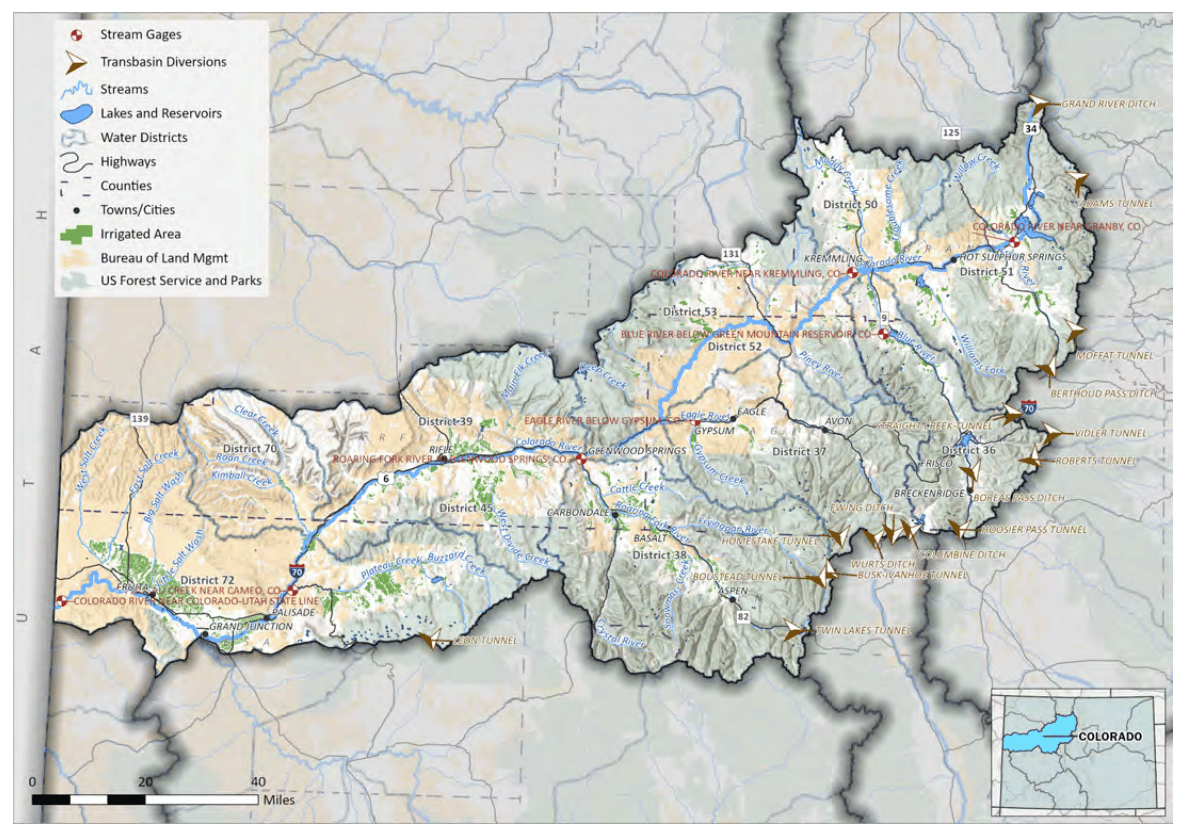Draft plans for Colorado River water supplies open for public comment

The U.S. Department of Interior will decide this summer — barring an agreement by affected states — how to curtail use of the Colorado River to stave off disaster for downstream water users, electricity customers and the U.S. food supply.
The Bureau of Reclamation released a draft supplemental environmental statement that included three options: Do nothing, curtail use based upon historic water rights or curtail use by an even percentage applied over the lower basin states.
Doing nothing would likely mean that the major reservoirs on the river, Lake Mead and Lake Powell, would deadpool, which would cut off electrical power generation from Glen Canyon and Hoover dams as well as eliminate the major source of water for cities in California, Nevada and Arizona.
SPONSORED CONTENT
Business Cares: April 2024
In Colorado, 1 in 3 women, 1 in 3 men and 1 in 2 transgender individuals will experience an attempted or completed sexual assault in their lifetime. During April, we recognize Sexual Assault Awareness Month with the hopes of increasing conversations about this very important issue.
Cutting water usage based on historic water rights would mean that California usages would be largely untouched but Arizona and Nevada would face major losses to their supplies.
Cutting water usage on a percentage basis would protect both Arizona and Nevada, along with usage by native American tribes, but hit California especially hard, including the Central Valley where half of the nation’s fruits, nuts and vegetables are grown. The Imperial Irrigation District in the valley is among the largest users.
Sen. John Hickenlooper, D-Colo., called the report “an important step.”
“As the Colorado River Basin faces the stresses of climate-driven drought, states and stakeholders must work toward a collaborative, seven-state solution …,” he said.
Likewise, Sen. Michael Bennet, D-Colo., said, “This year’s good snowpack can’t be an excuse to kick the can down the road. This SEIS is a constructive step toward sustaining the Colorado River system for the long term, and I continue to urge all seven basin states to come to an agreement. We have no time to lose.”
The Northern Colorado Water Conservancy District said that it is watching the development of the SEIS.
“Northern Water … will continue to support the state of Colorado through the state’s role with the Upper Colorado River Commission. Colorado water users have had to adapt to hydrologic variability and uncertainty while unfailingly meeting the requirements of the Colorado River Compact, and Northern Water will continue to do its part as a component of a statewide solution. The draft SEIS released Monday includes two alternatives that, if adopted, will represent a meaningful step toward addressing the overuse of Colorado River supplies downstream of Hoover Dam,” Northern wrote in a statement sent to BizWest.
The Colorado River, with its origin in Colorado, benefits seven states. The upper basin includes Colorado, Wyoming, Utah and New Mexico. The lower basin includes California, Nevada and Arizona. Multiple tribal nations also have rights to the water in the river, along with Mexico.
One hundred years ago, the Colorado River Compact divided the river evenly between the Upper and Lower basins, with each segment getting 7.5 million acre feet. The upper basin allocated its share each year based on snowpack. The lower basin, using lakes Mead and Powell like a bank, continued to use more water than was available to replenish the reservoirs. While the upper basin was allocating 70% shares, the lower basin was running at 110%.
At that time, the river supplied adequate amounts of water to help the states, particularly California, develop and grow, even though in modern times usage exceeded allocated amounts.
The federal government asked the states to come up with a plan. Six of the seven states — California being the exception — developed a plan. California devised its own plan, which left its water usage mostly intact.
The draft SEIS released Monday analyzes alternatives and measures to protect Glen Canyon and Hoover dams’ operations, system integrity and public health and safety in 2024 through 2026, the bureau wrote in a press statement.
“The Colorado River Basin provides water for more than 40 million Americans. It fuels hydropower resources in eight states, supports agriculture and agricultural communities across the West, and is a crucial resource for 30 Tribal Nations. Failure is not an option,” Deputy Secretary Tommy Beaudreau said in a written statement. “Recognizing the severity of the worsening drought, the Biden-Harris administration is bringing every tool and every resource to bear through the president’s Investing in America agenda to protect the stability and sustainability of the Colorado River System now and into the future.”
The draft SEIS will be available for public comment for 45 calendar days and the final SEIS is anticipated to be available with a record of decision in the summer.
The U.S. Department of Interior will decide this summer — barring an agreement by affected states — how to curtail use of the Colorado River to stave off disaster for downstream water users, electricity customers and the U.S. food supply.
The Bureau of Reclamation released a draft supplemental environmental statement that included three options: Do nothing, curtail use based upon historic water rights or curtail use by an even percentage applied over the lower basin states.
Doing nothing would likely mean that the major reservoirs on the river, Lake Mead and Lake Powell, would deadpool, which would cut off electrical power…
THIS ARTICLE IS FOR SUBSCRIBERS ONLY
Continue reading for less than $3 per week!
Get a month of award-winning local business news, trends and insights
Access award-winning content today!


